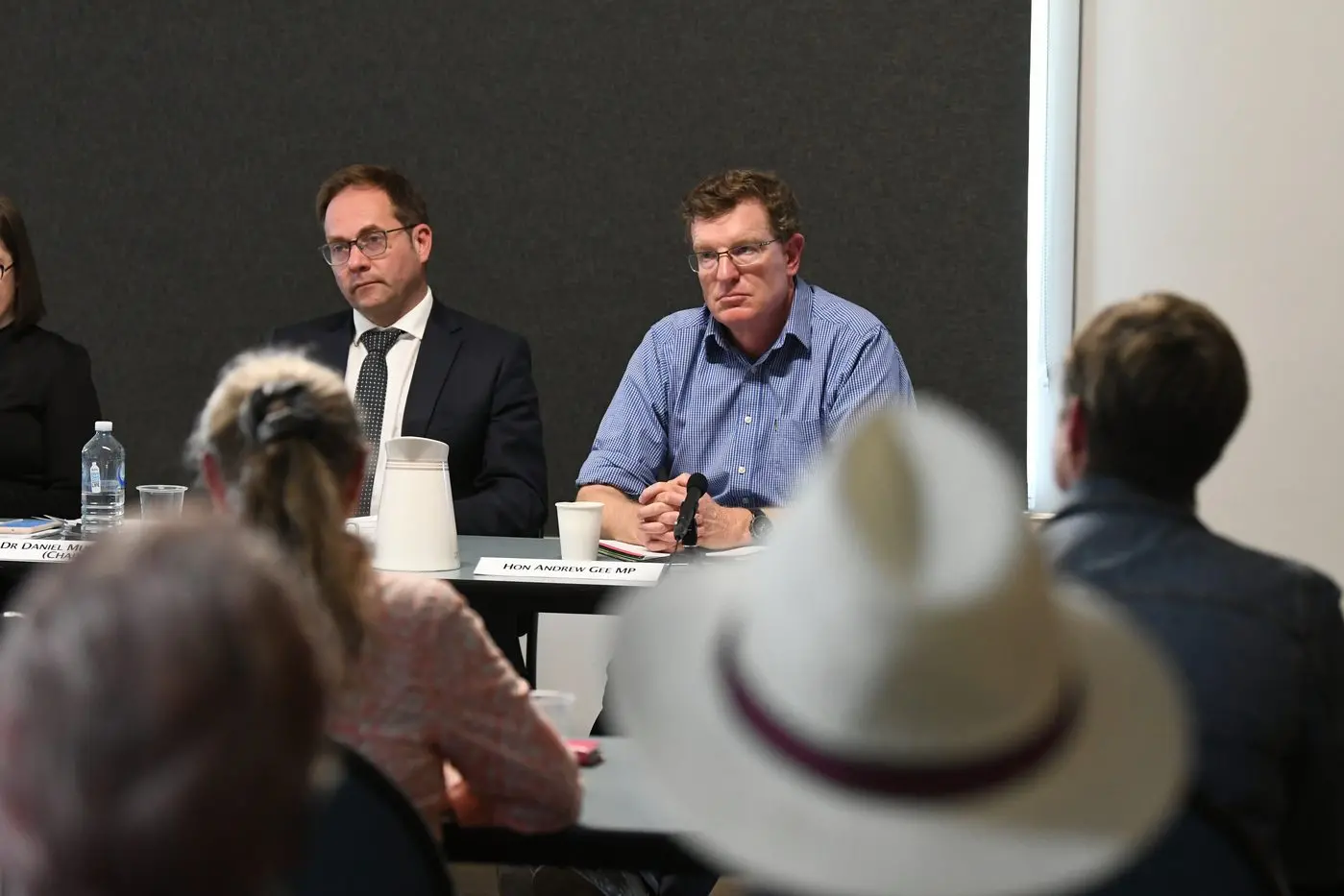PHOTO
Ensuring people devastated by natural disaster don't experience further heartache trying to claim their insurance is one of the key aims of the report from the Parliamentary Inquiry into insurers' responses to 2022 major floods claims.
Central West experiences are among those that have shaped 86 recommendations in the House Standing Committee on Economics' final report, released last Friday after a year of interviews and investigations.
Policyholders need to be treated better, is the first point of the chair's foreword to the report.
"Policyholders have a right to expect the timely and fair consideration of their claims," MP and chair Dr Daniel Mulino wrote.
"While many cases arising from the 2022 floods were handled well, too many were badly mishandled by insurers.
Dr Mulino said the report's title "Flood failure to future fairness" reflected “the collective failure by insurers to meet their obligations to policyholders after the 2022 floods, and our hope for a fairer system in the future through the 86 recommendations in this report.”
Homeowners left in limbo, forced to tell the horror of their flood experiences over and over as they tried to find out what was happening with their claim, payments being taken after claims were denied, claims paid out after political and media pressure, were just some of the stories of heartache heard when the inquiry visited Eugowra.
"Long delays due to poor communication and disputes over causation resulted in emotional, mental health and financial strains for many families," Dr Mulino said.
"More than two years on from the floods (in some areas) many people still have not been able to move back into their homes."
The chair extended his thanks to all those who shared their experiences of the floods and their aftermath for this report, acknowledging how difficult it had been.
"We acknowledge that many are still recovering from the financial and mental health toll and are very grateful that so many still found time to provide valuable insights so that others may benefit from a fairer system in the future," Dr Mulino said.
Recommendations in the report include:
Registration of the General Insurance Code of Practice with ASIC; and that the Code be made enforceable through insurance contracts;
Standardising key terms across all insurance contracts through legislated definitions, including “rainfall runoff”, “storm surge”, “wear and tear” and “lack of maintenance”;
New regulatory guidance by ASIC to clarify that insurers cannot deny claims based solely on expert reports that do not link the damage observed with the reported cause, including for hydrology and building reports;
Requiring insurers to provide guidance to policyholders on any maintenance obligations up front, and that there be a presumption of coverage in cases where maintenance would be infrequent, costly and highly irregular (for example, stumps);
Requiring insurers to make a decision on whether to accept or deny a claim within 12 months, and if that doesn’t occur, that they be required to accept the claims in full;
Requiring insurers to report key data on claims management performance to ASIC quarterly and, after a natural disaster, monthly; and that this data be published at the insurer and brand level, along with data on breaches of the Code of Practice.
Dr Mulino also highlighted recommendations to address inadequate temporary accommodation arrangements.
“At present,” he said, “the maximum guaranteed length often falls short of the actual time it takes to complete the rebuild.
"The Committee heard heartbreaking stories of families moving from motel to motel at short notice for months, only to end up camping in sheds and backyards after their allowance expired after 12 months – regardless of whether repairs on their home are complete.
"We believe insurers should, by default, assume the risk of how long it takes to complete works, and to bear the cost of temporary accommodation.”
Dr Mulino also noted evidence heard on policy exclusions for pre-existing damage or lack of maintenance applied to parts of a building unobservable by policyholders, such as stumps.
“Policyholders often pay premiums for decades with neither the insurer nor the insured knowing the state of the stumps,” he said.
“It is understandably frustrating when, after a flood, the floorboards are taken up and an insured person or family is told that they won’t be paid out due to the condition of the stumps. This aspect of coverage almost becomes a lottery.
“The committee recognises that insurers should not assume the risk of all pre-existing damage, but stumps are an example where too much risk is being placed on households. The committee recommends that insurers should generally take on this responsibility.”
The report also flags that “some form of government intervention” would be needed for high-risk properties, and that guiding principles for such intervention include the need for ongoing community and household level mitigation investment, and that no further development should occur in high-risk areas.
Specific recommendations include:
Disclosure of flood risk levels through property conveyancing and rental agreements;
Exploring regulatory mechanisms to discourage banks from financing new housing developments at a 1-in-100 flood risk or higher;
Changes to building codes to boost flood resilience;
Extending the Bushfire Resilience Rating App to flood risk;
Requiring insurers to reduce premiums after household-level mitigation works;
Further development of buyback and resilience programs for the highest-risk properties.





